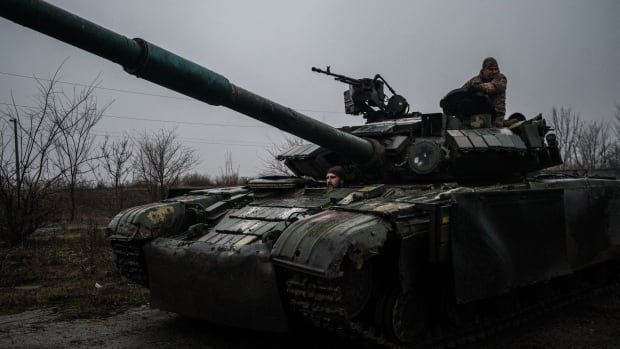Ukraine has decided to fight on in the ruined city of Bakhmut because the battle there is pinning down Russia’s best units and degrading them ahead of a planned Ukrainian spring counter-offensive, an aide to President Volodymyr Zelenskyy said.
The comments by Mykhailo Podolyak were the latest signal of a shift by Kyiv this week to continue the defence of the small eastern city, site of the war’s bloodiest battle as Moscow tries to secure its first victory in more than half a year.
“Russia has changed tactics,” Podolyak said in an interview published by Italy’s La Stampa newspaper. “It has converged on Bakhmut with a large part of its trained military personnel, the remnants of its professional army, as well as the private companies.”
“We, therefore, have two objectives: to reduce their capable personnel as much as possible, and to fix them in a few key wearisome battles, to disrupt their offensive and concentrate our resources elsewhere, for the spring counter-offensive. So, today Bakhmut is completely effective, even exceeding its key tasks.”
Russia has made Bakhmut the main target of a winter offensive involving hundreds of thousands of reservists and mercenaries. It has succeeded in capturing the eastern part of the city and the outskirts to the north and south, but has so far failed to close a ring around Ukrainian defenders there.
Ukrainians stick with Bakhmut
Kyiv, which had seemed at the start of March to be planning to withdraw to positions west of the city, announced at the start of this week that its generals had decided to reinforce its troops in Bakhmut and fight on.

In a morning update, the Ukrainian general staff reported a large number of attacks along the front and said “the enemy is not halting its attacks on Bakhmut.”
Moscow says capturing Bakhmut would be a step toward capturing all of Ukraine’s Donbas industrial region, a major objective. Russian Defence Minister Sergei Shoigu said on Tuesday seizing the city would punch a hole in Ukrainian defences and let Moscow advance deeper.
The intense trench warfare, described by both sides as a meat grinder, has led to huge losses. But Kyiv’s decision to stay and fight rather than withdraw was a sign it believes Russia’s losses are far worse than its own.
After making gains throughout the second half of 2022, Ukrainian forces have been mostly on the defensive since mid-November, while Russia has gone on the attack with troops called up in its first mobilization since the Second World War.
Kyiv waiting on weapons
But apart from around Bakhmut, the Russian winter offensive has largely failed. Meanwhile, Kyiv is awaiting a surge in Western military aid expected in coming months for an offensive once muddy ground dries in late spring.

Kyiv and the West also saw signs of exhaustion in Russia’s latest mass salvo of missile strikes on Ukrainian targets.
Russia fired hundreds of millions of dollars worth of missiles across Ukraine on Thursday, including an unprecedented six of its hypersonic kinzhal missiles, touted as a superweapon for which NATO has no answer. It is only believed to possess a few dozen kinzhals.
The barrage killed civilians, including a family buried under rubble while they slept in their homes near Lviv, 700 kilometres from the battlefield. But otherwise it appeared to have achieved little, with damaged power systems mostly quickly restored.
The worst damage appears to have been in the eastern city of Kharkiv, where the regional governor said around 500,000 people were still without power on Friday morning.
The Institute for the Study of War, a Washington-based think-tank, said in an assessment that “these missile strikes will not undermine Ukraine’s will or improve Russia’s positions on the front lines.”
It had been three weeks since the last similar Russian attack, the longest lull since such strikes began in October. Previously, Moscow had been unleashing such attacks roughly every week, challenging Ukraine’s ability to repair infrastructure before the next onslaught.
Britain’s ministry of defence said on Friday the reason for the longer lull was probably that Moscow was running out of missiles and now had to wait between barrages for its factories to produce them.
“The interval between waves of strikes is probably growing because Russia now needs to stockpile a critical mass of newly produced missiles directly from industry before it can resource a strike big enough to credibly overwhelm Ukrainian air defences,” it said.


